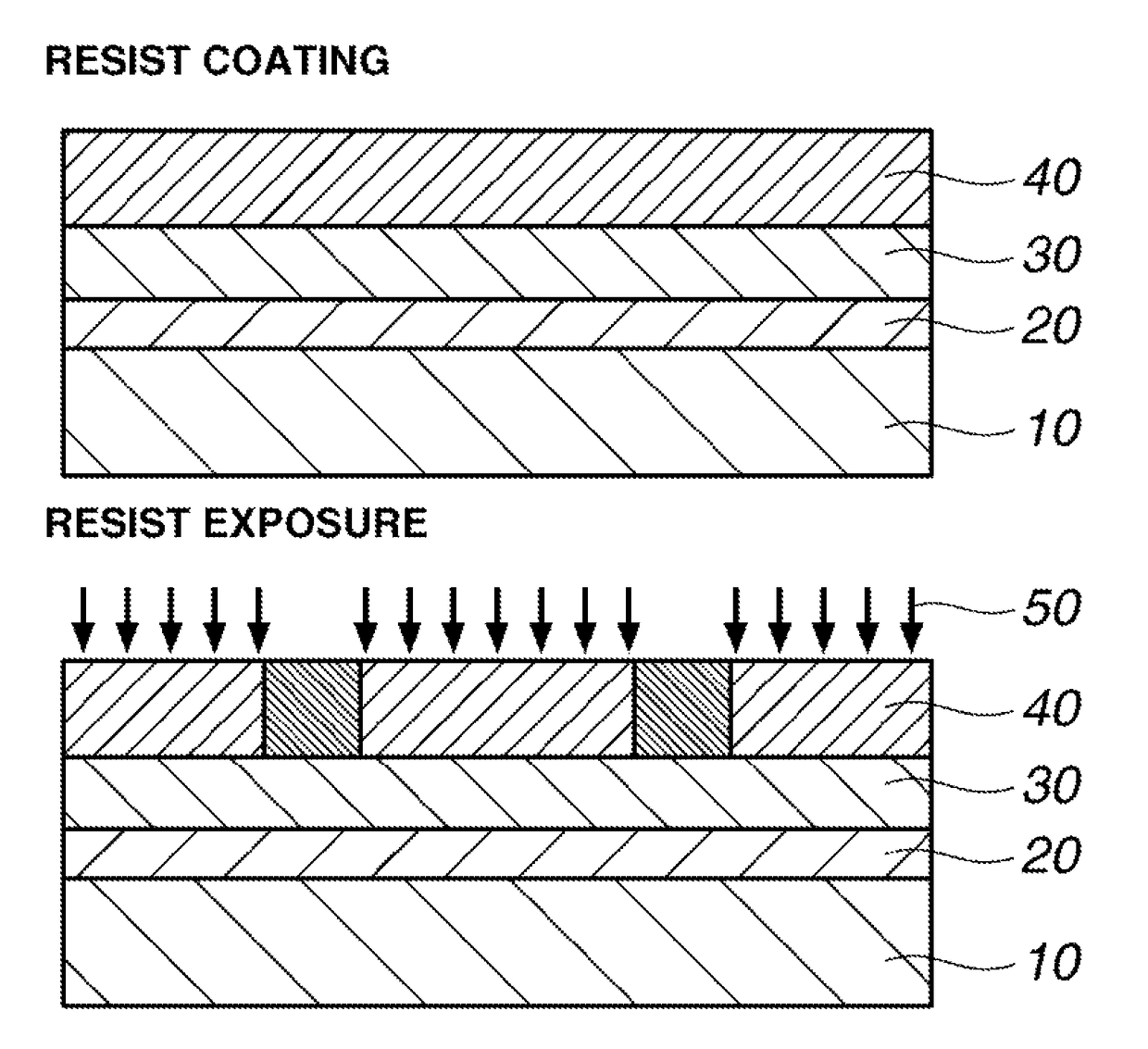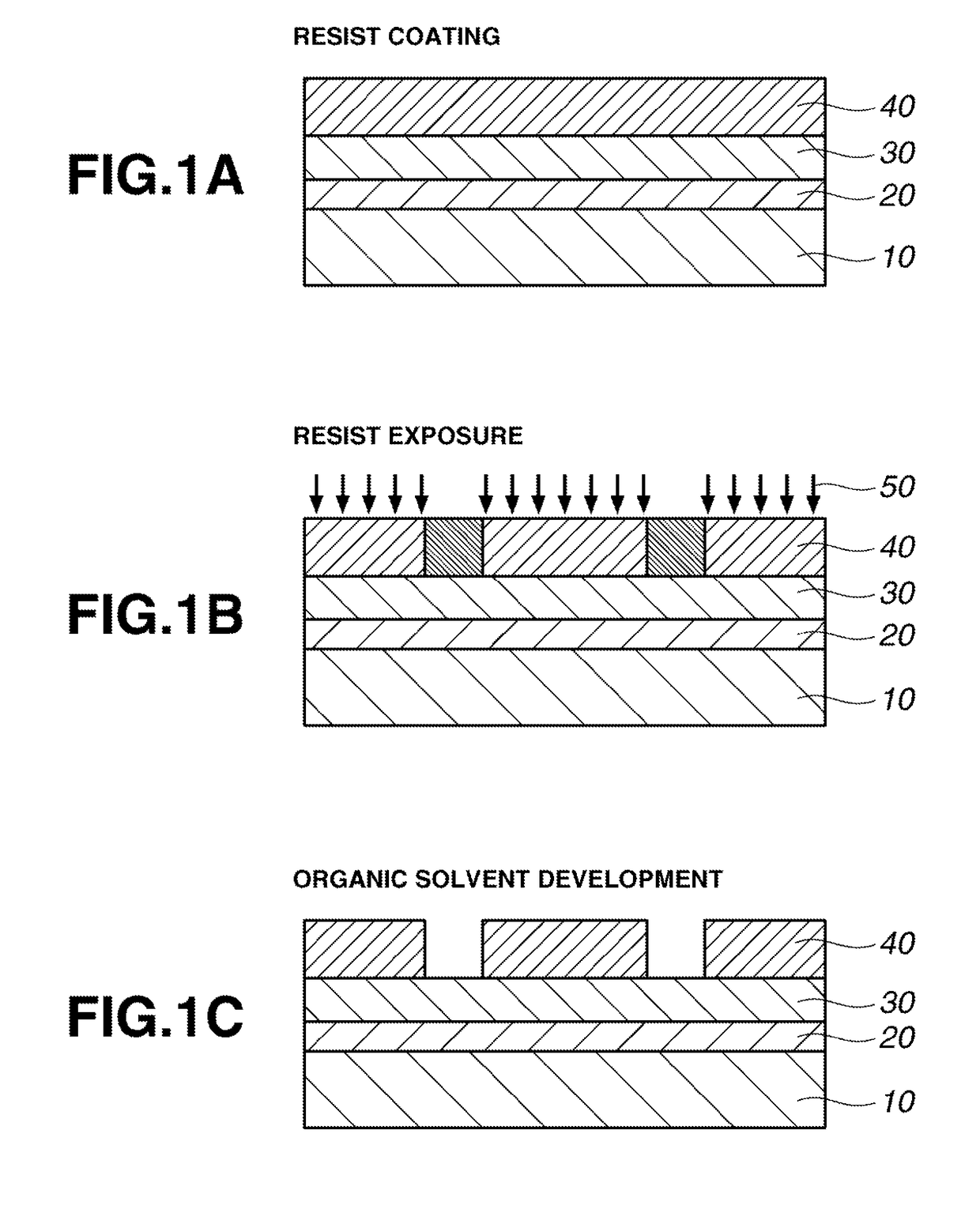Onium salt, resist composition, and patterning process
a technology of resist composition and onium salt, which is applied in the direction of photosensitive material processing, photomechanical equipment, instruments, etc., can solve the problems that no prior art pags can meet these requirements, and achieve the effect of good balance of sensitivity and mef and minimal defects
- Summary
- Abstract
- Description
- Claims
- Application Information
AI Technical Summary
Benefits of technology
Problems solved by technology
Method used
Image
Examples
synthesis example 1
Synthesis of PAG-1
[0256]PAG-1 was synthesized according to the following scheme.
[0257]
synthesis example 1-1
Synthesis of Intermediate 1
[0258]Under ice cooling, a solution of 2.70 g of sulfuryl chloride in 5 mL of dichloromethane was added dropwise to a solution of 2.98 g of trifluoromethanesulfonamide and 4.24 g of pyridine in 30 mL of dichloromethane. With continued ice cooling, the reaction solution was stirred for 5 minutes for aging. Under ice cooling, a solution of 3.33 g of 1-adamantane methanol in 15 mL of dichloromethane was added dropwise to the reaction solution. With continued ice cooling, the solution was stirred for 1 hour for aging. The solution was warmed up to room temperature and stirred at room temperature for 18 hours. The reaction solution was quenched with 20 g of water, from which an organic layer was taken out. The organic layer was washed twice with 20 g of water, combined with 3.71 g of benzyltrimethylammonium chloride and 20 g of water, and stirred for 10 minutes. The organic layer was taken out and washed 3 times with 20 g of water, followed by vacuum concentrat...
synthesis example 1-2
Synthesis of PAG-1
[0262]In a mixture of 30 g of dichloromethane and 15 g of water, 2.92 g of Intermediate 1 and 2.08 g of triphenylsulfonium methylsulfate were dissolved, followed by stirring at room temperature for 20 minutes. An organic layer was taken out and washed 5 times with 15 g of water. The organic layer was concentrated in vacuum. Steps of adding 30 g of diisopropyl ether to the concentrate, stirring for 5 minutes, and removing a supernatant were repeated twice. The residue was concentrated in vacuum, obtaining 3.34 g of the desired PAG-1 as oily product (yield 93%). Analytic results by IR, 1H-NMR, 19F-NMR and MALDI-TOF-MS are shown below.
[0263]IR (D-ATR):
[0264]ν=3064, 2903, 2849, 1476, 1448, 1336, 1225, 1193, 1161, 1138, 1068, 995, 983, 970, 940, 918, 841, 808, 749, 684, 598, 569 cm−1
[0265]1H-NMR (500 MHz, DMSO-d6):
[0266]δ=1.48 (6H, d), 1.58 (3H, d), 1.66 (3H, d), 1.92 (3H, s), 3.54 (2H, s), 7.76-7.88 (15H, m) ppm
[0267]19F-NMR (500 MHz, DMSO-d6): δ=−78.8 (3F, s) ppm
[026...
PUM
| Property | Measurement | Unit |
|---|---|---|
| refractive index | aaaaa | aaaaa |
| feature size | aaaaa | aaaaa |
| wavelength | aaaaa | aaaaa |
Abstract
Description
Claims
Application Information
 Login to View More
Login to View More - R&D
- Intellectual Property
- Life Sciences
- Materials
- Tech Scout
- Unparalleled Data Quality
- Higher Quality Content
- 60% Fewer Hallucinations
Browse by: Latest US Patents, China's latest patents, Technical Efficacy Thesaurus, Application Domain, Technology Topic, Popular Technical Reports.
© 2025 PatSnap. All rights reserved.Legal|Privacy policy|Modern Slavery Act Transparency Statement|Sitemap|About US| Contact US: help@patsnap.com



